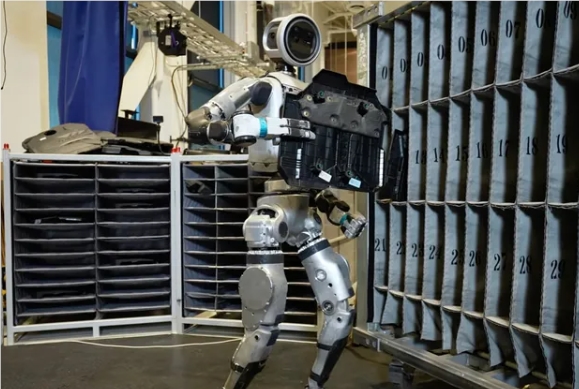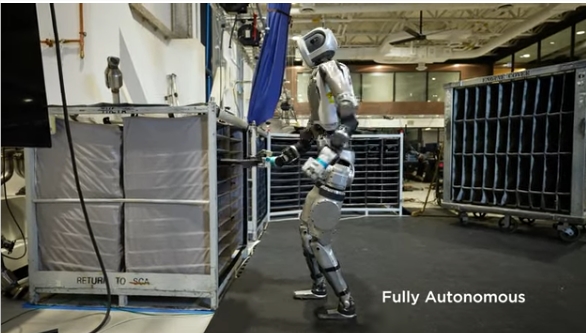Boston Dynamics' latest Atlas humanoid robot video has once again amazed the world. Unlike previous flexible motion displays, Atlas independently completed complex sorting tasks in a simulated factory environment, demonstrating its significant advances in machine learning and sensor upgrades. In the video, Atlas relies on its own ability to accurately locate, grab and move parts, and even respond to environmental changes and adjust its strategies to complete tasks independently, which marks a new milestone in humanoid robotics technology.
Recently, Boston Dynamics has once again attracted everyone's attention, releasing a great video of their new generation of humanoid robot Atlas.
The all-electric Atlas showed off its flexible athletic capabilities in previous videos, but this time, it was shown in a simulated factory environment that utilizes machine learning and upgraded sensors to complete the sorting task independently.

The task in the video is to transfer the hood between the supplier's container and a moving sorting trolley. While this mission doesn't sound particularly exciting, it actually shows how Atlas can work together with multiple new features. With only one "box location list", Atlas uses a variety of sensors and machine learning models to accurately locate the box and determine how to use the body, arms and three-finger hands to grab and move the parts. .
In the demonstration, Atlas demonstrated the ability to respond to environmental feedback in real time. There is a scene that shows that a part is slightly higher, causing it to be unable to be placed smoothly in the compartment of the sorting car. When Atlas encountered resistance, it did not rush to continue, but took the parts off first, reevaluated their direction and position, then adjusted, tried again, and finally completed the task successfully.
The entire video has a "completely autonomous" watermark, and Boston Dynamics obviously wants to emphasize that Atlas can perform complex work with very little human intervention. Tesla's Optimus robots served drinks to guests at a Cybercab launch a few weeks ago, but it was reported that they were mostly manipulated by humans.

With the advancement of Atlas, the robot may be more than just a technology display platform in the future, just like other Boston Dynamics robots, such as the four-legged Spot and the one-armed Stretch. However, everyone is also looking forward to the advanced features of Atlas not being accompanied by a sky-high label.
Key points:
1. Boston Dynamics demonstrates an all-electric Atlas robot that can perform complex sorting tasks independently.
2. Atlas uses machine learning and upgraded sensors to achieve real-time environmental feedback and adjustment.
3. The watermark of "complete autonomy" is displayed in the video, emphasizing its ability to work with minimal human intervention.
Atlas' success demonstrates the huge potential of humanoid robot technology in practical applications, which may be applied to more industrial scenarios in the future to improve production efficiency. However, the price factor remains a key challenge for its marketization, and we expect Boston Dynamics to strike a balance between technological innovation and cost control.